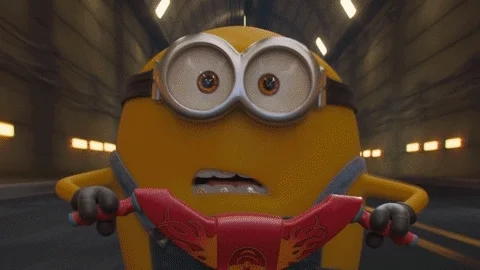Fast GIF generation in Go
Go has a built-in GIF package. This works fine for encoding static images into a GIF image. The
slow problem resides in another package that we use to prepare those static images. But let’s talk
about the gif package first.
The EncodeAll(w io.Writer, g *GIF) error function converts a *GIF struct, which contains an array of
*image.Paletted into GIF format, and then writes into io.Writer. image.Paletted is an in-memory image of
uint8 indices into a given palette.
We must use a paletted image here instead of a “normal” image because GIF files can hold up to 256 colors,
whatever it is, that’s called a palette. So to make a GIF, we need to choose a color palette beforehand, up
to 256 colors, and then convert all the needed images into that color space. With the hex format, we have at
least 16 million colors, we have to map those 16M colors into 256 colors of our GIF. And we need the draw
package for that.
Draw(dst Image, r image.Rectangle, src image.Image, sp image.Point, op Op) will replace the rectangle r
of destination image dst by the source image src, align by point sp. We’re on the paletted image case
so the dst image will be a paletted one. Draw will call DrawMask, and then it will call drawPaletted.
drawPaletted will loop over each source pixel, finding the matching color for each pixel from the color
palette by minimizing the sum squared difference. The code looks like this:
bestIndex, bestSum := 0, uint32(1<<32-1)
for index, p := range palette {
sum := sqDiff(er, p[0]) + sqDiff(eg, p[1]) + sqDiff(eb, p[2]) + sqDiff(ea, p[3])
if sum < bestSum {
bestIndex, bestSum = index, sum
if sum == 0 {
break
}
}
}
The problem here is for each GIF frame, we have to loop over palette every time to find the matching colors.
If we use up 256 colors on the palette, then this loop will run 256 times for each pixel, which is slow.
Solution? A cache!
Let’s put that in. We use sync.Map here because of course we will generate GIF frames concurrently,
and the normal Go map is not thread-safe.
// Out of pixel loop
cache := sync.Map{}
// Then use the cache
cachedKey := [4]int32{er, eg, eb, ea}
bi, ok := cached.Load(cachedKey)
if ok {
bestIndex = bi.(int)
} else {
for index, p := range palette {
sum := sqDiff(er, p[0]) + sqDiff(eg, p[1]) + sqDiff(eb, p[2]) + sqDiff(ea, p[3])
if sum < bestSum {
bestIndex, bestSum = index, sum
if sum == 0 {
break
}
}
}
cached.Store(cachedKey, bestIndex)
}
And how do I know how to optimize this specific piece of code again? Well, inject this into your slow code:
import "github.com/pkg/profile"
func main() {
defer profile.Start().Stop()
// Your slow code here
}
It will output something like /var/folders/y0/9l417xks1_s9_hdpxh88lrwr0000gn/T/profile1238445006/cpu.pprof, then
use your Go:
go tool pprof -web /var/folders/y0/9l417xks1_s9_hdpxh88lrwr0000gn/T/profile1238445006/cpu.pprof
That’s it. I found the bottleneck using pprof, then I cloned the draw package, added a cache, and made the GIF
generator run fast. Now I enjoy my GIFs.
